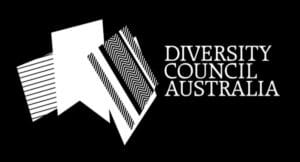With the momentum of a committed team to support improvement, retailers can overcome many significant challenges their business may face. The question is how to inspire commitment and engage retail teams to contribute their insights to the improvement of marketing strategy.
Existing Customers
A good starting point in this process is to consider the impact of the proposed marketing strategies on existing customers. Existing customers can react to new strategic marketing initiatives in a number of negative ways:
- They can feel the pricing is too high or unfair (to attract new customers)
- They had an unresolved complaint as the original promise has not been delivered
- They took a competitor’s offer as it offered a better value proposition
- They left because they felt the retailer didn’t care
The last two make up the majority of why customers will no longer use a retailer’s service or buy their products, which can be quite confronting. Before spending time and money attracting new customers and clients with whom a business does not currently have a relationship, consider the following statistics:
- Repeat customers spend 33% more than new customers
- Referrals among repeat customers are 107% greater than non-customers
- It costs six times more to sell something to a prospect than to sell that same thing to a customer
Marketing plans are more effective if used to build, nurture, and develop customer relationships. This doesn’t need to be difficult, as building these relationships just means treating customers and clients as strategic partners and showing them a level of care. It’s important to try to satisfy them with the right products and services, supported by the right promotion and making it available at the right time and location.
Incorporate Stakeholder Input into Strategic Marketing Plans
The process of gathering stakeholder input is one that holds significant potential benefit for retailers.
However, it is only when their input is analysed and incorporated into the strategic marketing plan that its true value emerges. One way in which stakeholder feedback can highlight inconsistencies in the marketing plan and flag opportunities for improvement is through an evaluation of strategic fit.
Strategic Fit
Strategies and objectives must be assessed against the business’s existing competencies, capacities and abilities. The congruence model is based on the principle that an organization’s performance is derived from four elements: tasks, people, structure, and culture. The higher the congruence, or compatibility amongst these elements, the greater the performance.
Step 1: Analyse each key element separately
First it is important to understand what work is at the core of the organization’s performance.
- Does the work require specific knowledge or skill?
- What are the intrinsic rewards involved in completing the work?
- Is it mechanistic or creative?
- How does the work flow?
People: you know what work is done; now you have to look at who does it. You need to know what types of people are currently performing the organization’s critical tasks.
- Who interacts to get the work done? Managers, employees, peers, external stakeholders.
- What skills do the people possess? Knowledge, experience, education, competencies.
- What are these people’s preferences and expectations for compensation, reward, career progression, recognition, and organizational commitment?
Organisational Structure: this element involves looking at the formal structure, systems and processes that support the organization.
- How is the company organized? Mechanistic or organic.
- Are there distinct business units or other separations? Regional, functional, by product, by market.
- How distinct and/or rigid are the lines of authority?
- How standardized is the work? Rules, policies, procedures.
- How is work measured and incentivized and rewarded?
Culture: here you are concerned with the unwritten rules that define how work is really done – which depends on attitudes, beliefs, commitment, and motivation and so on, as well as the formal elements of process and structure that you have already examined. This element is the hardest to define, and often the one with the most influence.
Step 2: Analyse how these elements relate to one another and the strategy
Once you have identified the major factors in performance for each of the four key elements, you need to look at how they interrelate. You are looking for areas of congruence and incongruence:
- Work and People: are the right people doing the work?
- Work and Structure: is the work done in a well-coordinated manner given the organizational structure in place?
- Structure and People: does the formal organizational structure allow the people to work together effectively?
- People and Culture: are the people working within a culture that best suits them?
- Culture and Work: does the culture support the nature of the work that needs to be done?
- Structure and Culture: do the formal and informal structures work cooperatively or do they compete?
Step 3: Plan to create and maintain congruence
Work through the areas of congruence and incongruence identified, and decide what needs to be done to resolve major incongruence and to reinforce congruence. As the marketing plan moves forward it’s important to keep looking for the things that are well coordinated, as well as those that aren’t. This is where the key stakeholder group can continue to be of assistance.
It’s just as important to reinforce what is currently congruent, as it is to change what’s incongruent, and build in processes to ensure that the current congruence is maintained.
Facilitate Informed Decision Making Regarding Marketing Budgets and Targets
Informed marketing decision making requires a process that facilitates the development of budgets and targets that will stand up to the impacts of the retail sector both internal and external to business.
Marketing strategies need to be tested for their viability with regard to acceptance levels of risk.
Identify Threats
The first stage of a risk analysis is to identify threats facing you.
Threats may be:
- Human – from individuals or organizations, staff turnover etc.
- Operational – from disruption to supplies and operations, loss of access to essential assets, distribution failures…
- Reputational – from loss of business partner or employee confidence, or damage to reputation in the market.
- Procedural – from failures of accountability, internal systems and controls, organization, fraud, etc.
- Project – risks of cost over-runs, implementation of marketing taking too long, or insufficient product or service quality, etc.
- Financial – from business failure, stock market, interest rates, etc.
- Technical – from advances in technology, technical failure, etc.
- Natural – threats from weather, natural disaster, etc.
- Political – from changes in public opinion, government policy, foreign influence, etc.
- Others
Eliminate Risk
Once the threats faced have been identified, the next step is to work out the likelihood of the threat being realized and to assess its impact. One approach to this is to make a best estimate of the probability of the event occurring, and to multiply this by the amount it will cost the business to set things right if it happens. This provides a value for the risk.
In retail this may involve a cost benefit analysis.
Manage Risk
When managing risk, it is important to choose cost-effective approaches – in most cases, there is no point in spending more to eliminate a risk than the cost of the event if it occurs. Often, it may be better to accept the risk than to use excessive resources to eliminate it.
Risk may be managed in a number of ways:
- By using existing assets: Here existing resources can be used to counter This may involve improvements to existing methods and systems; changes in responsibilities; improvements to accountability and internal controls, etc.
- By contingency planning: You may decide to accept a risk, but choose to develop a plan to minimize its effects if it happens. A good contingency plan will allow a business to take action immediately. Contingency plans also form a key part of Business Continuity Planning (BCP).
- By investing in new resources: Your risk analysis should provide the basis for deciding whether to bring in additional resources to counter the risk. This can also include insuring the risk: here a business may pay someone else to carry part of the risk; this is particularly important where the risk is so great as to threaten an organization’s solvency.
Review
After carrying out a risk analysis and management exercise, it is likely to be beneficial to implement a framework of regular reviews. These might involve formal reviews of the risk analysis, or may involve testing systems and plans appropriately.
Instigating a program of risk analysis to evaluate marketing initiatives goes some way to facilitating the development of effective budgets and targets. It not only allows for a consideration of potential threats, it motivates the preparation of contingencies that can be implemented in a shorter timeframe if required than would be possible if they were developed only when problems arose.
Looking to learn the art of Sales Programs? The ARA Retail Institute provides leading accredited training options including workshops and masterclasses in Managing Sales Programs. Have a look at our classes below.
{{cta(’40d6a8d0-da16-41ea-b8f5-0fc9325ab236′,’justifyleft’)}}{{cta(‘3c912461-ee1f-4dea-810c-94312d83b87c’,’justifyleft’)}}























